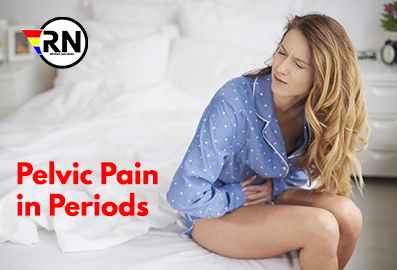Welcome to Reviews and news today I am present with our research collection about “Pelvic Pain in Periods” Pelvic pain during menstruation is a common issue faced by many individuals across the globe. But what is it, exactly? Why does it happen? Let’s dive in.
The most common type of period pain
Doctors divide period pain into two types. The more common is known as ‘primary dysmenorrhoea’. It usually begins from the time of your first period or in the years shortly afterwards.
The pain can be felt in the lower abdomen (belly), but sometimes it’s felt in the lower back and thighs. It can feel like a constant ache, a heaviness, or a cramping, gripping pain.
The pain usually begins in the days leading up to a period and continues until the period stops or eases after the first few days.
There’s no underlying condition with this type of period pain. It can be managed with over-the-counter painkillers like Mefenamic acid (Ponstan), paracetamol or the contraceptive pill. A hot water bottle, heat pack, physical activity or relaxation techniques are also helpful.
The pain is usually not severe and, if treated with any of these options, it doesn’t get in the way of your work, studies, social life or sport. If, however, the pain starts to impact your daily activities, it’s important to talk to your doctor. “Pelvic Pain in Periods”
Pelvic Pain in Periods
Causes of Pelvic Pain
Pelvic pain during periods, medically termed as dysmenorrhea, can stem from various factors. This pain may arise from muscle contractions, inflammation, or an underlying reproductive health issue.
Symptoms Accompanying Pelvic Pain
Aside from the pain itself, individuals might experience bloating, nausea, fatigue, or even mood changes. Ever felt like you’re on an emotional rollercoaster during that time of the month? Blame it on the hormones!
The Menstrual Cycle and Pelvic Pain
The Role of Hormones
Hormones, especially prostaglandins, are chemical messengers responsible for triggering uterine muscle contractions. Higher levels mean more intense contractions and, yes, more pain.
The Ovulatory Phase
During ovulation, an egg is released. Some individuals experience sharp pelvic pain during this phase, known as mittelschmerz. Sounds fancy, doesn’t it? But it’s just a brief pain, signifying the egg’s release.
Common Conditions Resulting in Pelvic Pain During Periods
Endometriosis
Imagine tissue similar to the lining of the uterus growing outside the uterus. Painful, right? That’s endometriosis for you. It can cause severe pelvic pain, especially during periods.
Fibroids
These non-cancerous growths on the uterus can be sneaky pain culprits during menstruation. They vary in size but can cause significant discomfort.
Pelvic Inflammatory Disease (PID)
An infection of the reproductive organs, PID can lead to scarring and, yes, pain, especially during menstruation.
Managing and Treating Pelvic Pain
Lifestyle Changes
Simple tweaks, like regular exercise or using a heating pad, can work wonders. Remember the last time you felt warmth during a cold day? That’s how your pelvis feels with a heating pad during periods! “Pelvic Pain in Periods”
Medications
Over-the-counter pain relievers or even hormonal birth control pills can be effective. It’s like having an armor against the monthly pain onslaught. “Pelvic Pain in Periods”
Surgical Options
In severe cases, surgery might be the key. It’s not the first line of defense but can be a game-changer for chronic conditions.
When to Seek Medical Attention
Warning Signs
If the pain is debilitating, lasts longer than usual, or is accompanied by other alarming symptoms like heavy bleeding, it’s time to see a doctor. Why? Because listening to your body is crucial.
Conclusion
Pelvic pain during periods can range from a mild annoyance to a crippling condition. Knowing the cause, seeking treatment, and understanding your body are essential steps to managing and even overcoming this pain. Because, after all, why should one endure the pain when solutions are available? “Pelvic Pain in Periods”
Frequently Asked Questions (FAQs)
- Is it normal to have severe pelvic pain during periods?
While some discomfort is common, severe pain is a red flag and should be addressed. - Can a change in diet help with pelvic pain?
Yes, certain diets can help reduce inflammation and alleviate symptoms. - Are there any alternative therapies for pelvic pain?
Therapies like acupuncture and yoga have been beneficial for some in managing pain. - How do birth control pills help with pelvic pain?
They regulate hormones, which can reduce the severity of pain. - Can pelvic pain be a sign of infertility?
In some cases, conditions causing pelvic pain, like endometriosis, can impact fertility.

